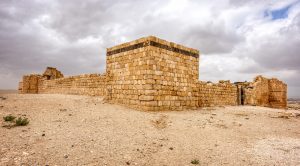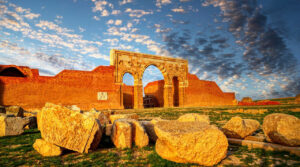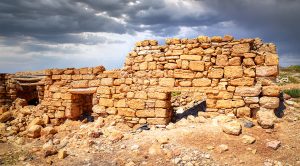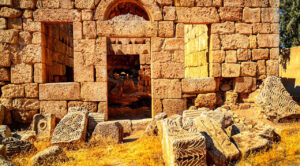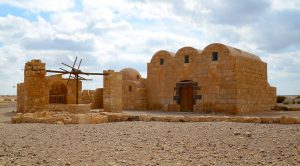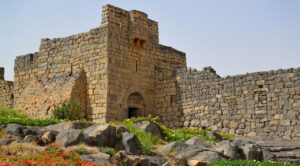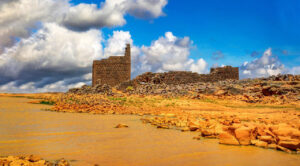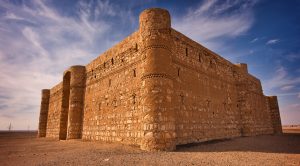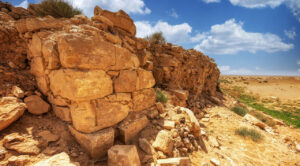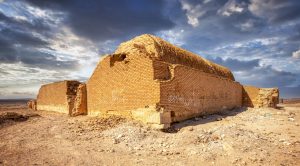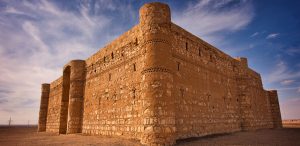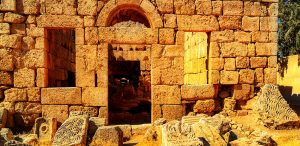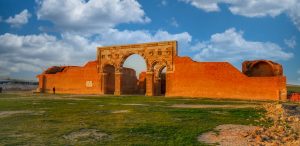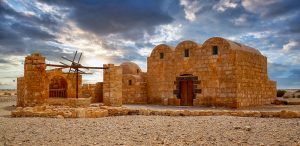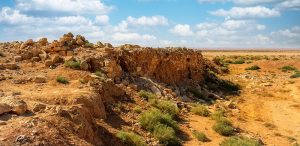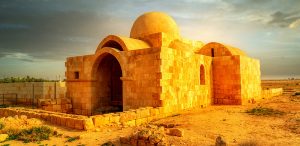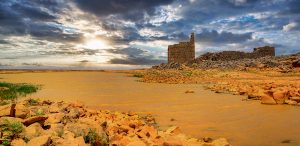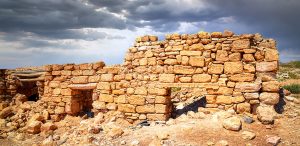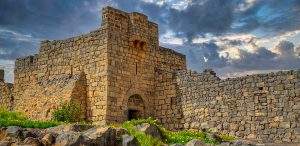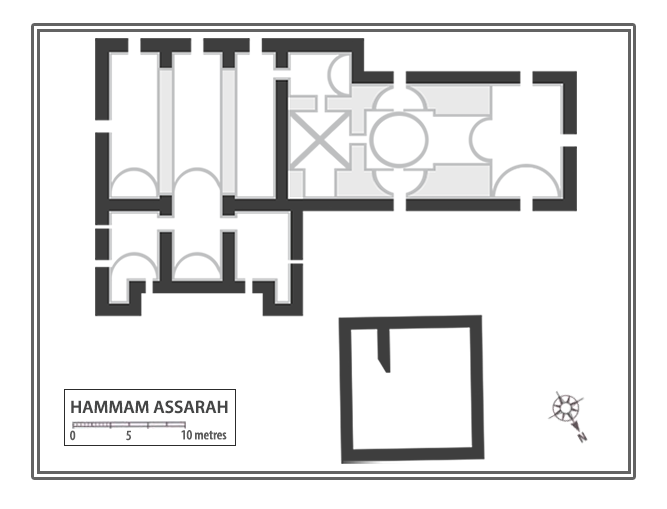Situated just 2 kilometres west of Qasr Al-Hallabat, Hammam As-Sarah is a historical bath complex that offers a fascinating glimpse into ancient architectural and cultural traditions. Smaller yet more captivating in its design compared to the celebrated Amra baths, this elegant limestone structure has undergone a partial restoration, reviving its charm and significance. Hammam As-Sarah comprises three main elements that invite exploration: the Audience Hall, the Bath Complex, and the Water System.
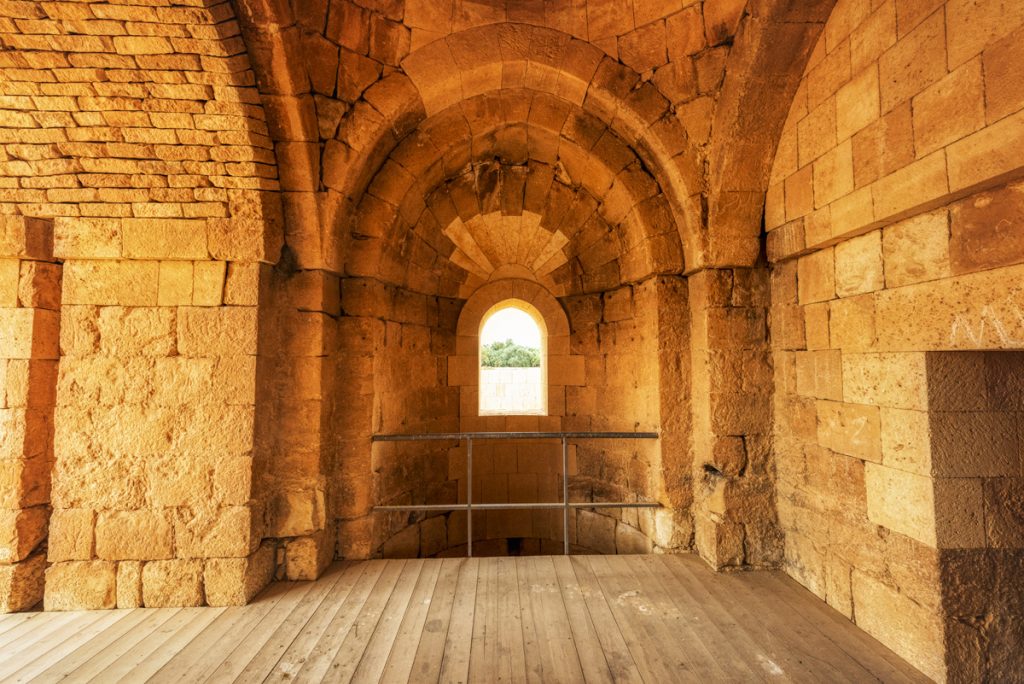
The Audience Hall
The Audience Hall is a striking feature, topped with three tunnel vaults supported by the sidewalls and two transverse arches. Within the hall’s northeastern corner lies a beautifully designed fountain, which was historically fed by water from an elevated tank positioned to the east of the complex. This space stands out not just for its functional role but also for its structural grace, offering a window into the creativity of its creators.
The Bath Complex
The Hammam’s bath area is a thoughtfully constructed space consisting of three main rooms, each corresponding to traditional thermal bathing elements—cold, warm, and hot rooms. Visitors can enter this area through a northern doorway in the Audience Hall, which first opens into the apodyterium (the changing room). From here, one can turn right into the tepidarium (the heated room), a space designed for comfort and relaxation.
A passageway directly opposite the entrance leads to a small bay, while to the northeast of the tepidarium lies the caldarium (the hot room), accessed through another doorway.
This heated chamber was meticulously planned, featuring two semicircular niches with central windows on either side of its domed space. Remarkably, the dome was coated with rose-tinted cement on the exterior, while its interior supported shale coverings. Decorative apertures punctuated the dome, allowing ambient light to infuse the space. Though weathered by time, the remnants of these eight rounded openings, alongside traces of marble, mosaics, and frescoes, still echo the bath’s former magnificence, as efforts continue to restore its artistry.
The Water System
Integral to the function of Hammam As-Sarah, the water system showcases the ingenuity of its design. Complete with a well, tank, and turning circle, the system relied on animal power to raise and supply water to the complex. This setup reflects the sophistication of hydraulic engineering in this era.
Nearby, visitors can observe the remains of a late Ottoman mosque, adding another layer of historical significance to the site. These ruins, although damaged during the 1950s when stones from the mosque were taken for other uses, have thankfully been restored, preserving their legacy.
Visiting Today
Hammam As-Sarah offers a unique opportunity to step back in time. Unlike the nearby Qasr Al-Hallabat, there is no visitor centre here, lending the site a quieter, more intimate feel. Visitors can easily access the complex by parking near the entrance gate. If the gate appears closed, you need only push it to begin your exploration.
This partially restored monument provides an immersive experience of ancient traditions and architectural brilliance, making it a must-visit site for history enthusiasts and curious travellers alike.

Hammam As-Sarah is a remarkable relic from the early Islamic era, reflecting the architectural brilliance of its time. Attributed to the caliphate of Al-Walid bin Abed al-Malik (705–715), its design shares similarities with the famed bath complex of Qasr Amra, offering a glimpse into the luxurious bathing culture of the period.
Despite its early Abbasid-era transformation, which saw the hypocaust dismantled and its materials repurposed for kiln construction, parts of the bath, such as the apodyterium and frigidarium, continued to serve their original purpose. These spaces stand as a testament to the site’s enduring utility.
Unearthed in 1905 by Butler and later documented by Creswell in 1926, Hammam As-Sarah once stood impressively intact. However, looting in the mid-20th century caused significant damage, leaving much of it in ruins. Fortunately, excavations and conservation efforts by the Department of Antiquities in the 1970s salvaged what remained, preserving its historical essence even if some elements were not fully restored.
Today, the site offers a fascinating window into the ingenuity and artistry of early Islamic architecture, inviting visitors to imagine the vibrant life it once hosted.


